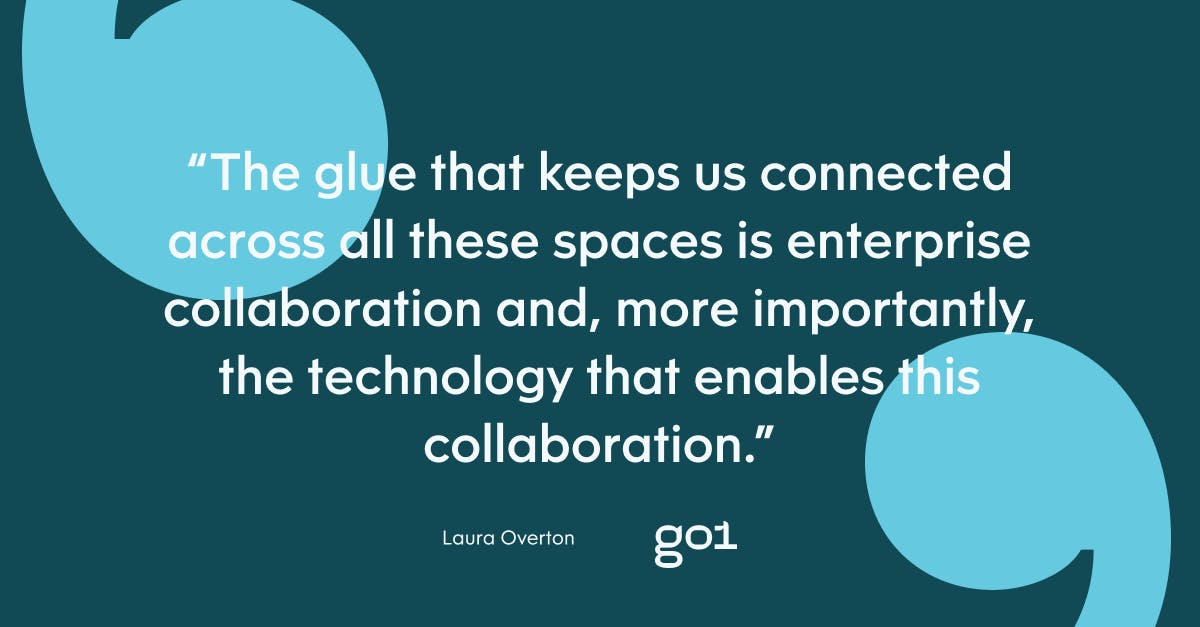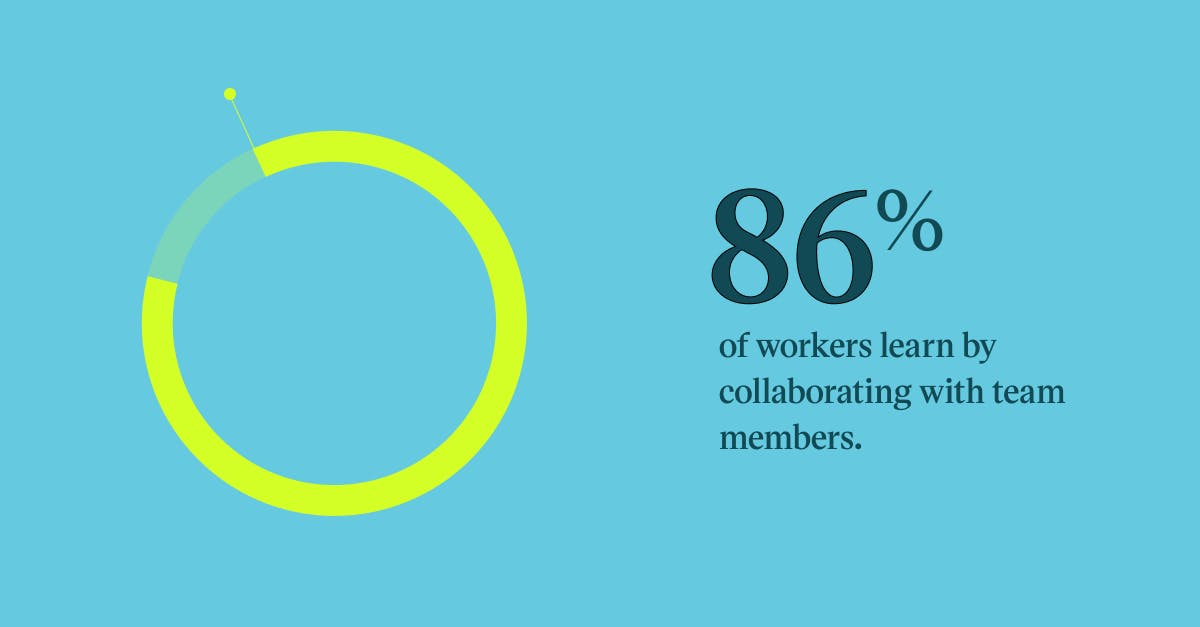
Cultivating learning in workplace communities

Written by guest blogger Laura Overton, award-winning L&D Analyst and co-founder of Emerging Stronger. Laura is an experienced international speaker, author and facilitator with a passion for exploring, challenging and sharing. She believes that the role of learning leaders in the changing workplace is to unlock the potential of business and people.
The spaces where we work have changed forever. Workers are no longer constrained to a single location. We work in the office, in coffee shops, with clients, at home, in the back yard, at the factory or shop floor. Increasingly, the ideal workspace has become a mix of all of the above — whatever suits the job at hand.
The glue that keeps us connected across all these spaces is enterprise collaboration and, more importantly, the technology that enables this collaboration. Recently, Gartner revealed that 80% of workers used team collaboration tools such as Slack in 2021, up 44% from 2019.

These tools create environments that allow us to stay connected, keep sharing, and keep projects on track across the wide range of spaces where work occurs.
Collaborative environments create fertile ground for learning
The same tools also have the potential to allow us to keep learning: from mistakes, from trial and error, from solving challenges and creating ideas, and from each other. As such, these collaboration tools have become fertile ground for learning.
According to the Mindtools for Business Learner Intelligence study released in May 2022, 7 out of 10 workers think community environments such as Slack and MS Teams are either useful or essential for addressing work-related challenges.
What’s more, 85% of workers learn by turning to colleagues for support, while 86% learn by collaborating with team members. Given this, staff have found ways to make learning flourish in online collaborative environments.

And it’s working. For the first time in the 8-year history of Mindtools’ study, more workers prefer online learning (41%) than face to face learning (34%). These findings represent a massive sea change and one that L&D leaders should keep in mind.
Are L&D teams ready to dig in?
If enterprise collaboration systems are already creating fertile ground for staff to learn, and staff are increasingly comfortable embracing digital technologies, are L&D teams ready to dig in?
In my view, the role of L&D is clear. We use our expertise to help individuals, teams, and organisations be equipped and ready — for today’s challenges and tomorrow’s opportunities.
Historically, the spaces in which we operated restricted our ability to achieve these objectives. When L&D activity is confined to the classroom and the LMS, our approach to supporting learning is also restricted.
Plus, cultivating one type of learning over and over again in the same spaces can be counterproductive, just as planting the same crop in the same soil can stunt growth.
For example:
- We’ve shifted our old models of face-to-face learning delivery into virtual learning, thereby increasing our skills in using MS Teams or Zoom to deliver virtual classrooms. However, by keeping everything else the same, we still struggle with attention spans and Zoom fatigue.
- We’ve tried to encourage ‘self-directed learning’ by pumping online content into the digital spaces where people are working so that knowledge is available at the point of need. However, learners often struggle to separate the wheat from the chaff, giving up when they become overwhelmed with choices.
- Some teams have focussed on ‘social learning’, using enterprise collaboration platforms to establish specific communities of practice and encourage user-generated content to help teams help each other. Yet, once again, we run into the problem of struggling to maintain interest or momentum.
While these approaches are valid for cultivating learning in collaborative environments, they only represent one facet of the learning process. Learning is complex and can’t be constrained to a single model, technology, or approach.
So, how do we dig into the opportunities that collaborative learning environments provide?
Getting back to basics
Instead of asking what communities can do to support learning, let's go back to first principles to explore what’s important for learning to flourish.
Connie Malamed has curated 10 definitions of what learning is. One that resonates with me is that learning is the process of “Acquiring knowledge and skills and having them readily available from memory so you can make sense of future problems and opportunities.” The process of learning is tough and takes time!
Learning isn’t just about access to knowledge, it’s the slow journey of shifting from novice to expert, from knowing about something to practising it and ultimately mastering it.
Typically, our L&D interventions start with supporting new knowledge. We focus on courses and content because our physical spaces and time boundaries have constrained our interventions to the very start of the learning process, leaving the rest to chance.
Online collaborative environments create new opportunities to support the full flow of learning — from knowledge acquisition to practice, mastery, and new habits.
They also create places to enable individuals, teams, and organisations to learn from each other through communities of practice.
Cultivating a garden of learning
At Emerging Stronger, we see new workspaces as the terrain in which deep learning can take root. But, to cultivate learning in those spaces, we need to get back to the basics of understanding how learning grows.
In the next article in this series, Michelle Ockers will explore the biggest myths that stunt learning growth, as well as how to lean into learning science to harness everything that collaborative workspaces have to offer.
This article is Part 1 in a series of blogs written by the Emerging Stronger team, each exploring the theme of workplace communities. Be sure to take a look at the other articles in the series, including:
- Part 2: Applying learning science to workplace communities by Michelle Ockers
- Part 3: Enabling L&D to develop and nurture learning that delivers a rich harvest by Shannon Tipton
Want a step-by-step guide to cultivating learning in workplace communities? Download our latest toolkit from Emerging Stronger for insights on:
- Preparing the ground
- Sowing the right seeds to stimulate learning
- Nurturing growth
- Harvesting impact!
For more insights, subscribe to the Go1 newsletter to stay on top of all the latest L&D trends. Or, you can book a demo today to find out how Go1 can help with your team’s learning needs.




